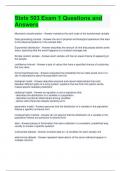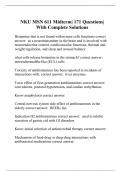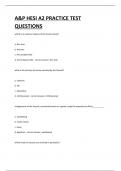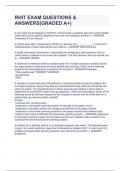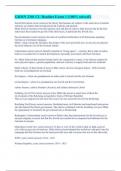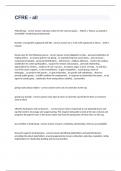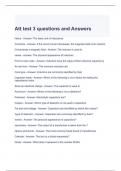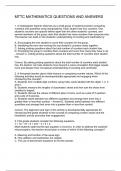Exam (elaborations)
Stats 503 Exam 1 Questions and Answers
- Course
- Institution
Stats 503 Exam 1 Questions and Answers Monotonic transformation - Answer-maintains the rank order of the transformed variable Data generating process - Answer-the set of physical and biological operations that lead to the observed patterns in the sample data Exponential distribution - Answer...
[Show more]
